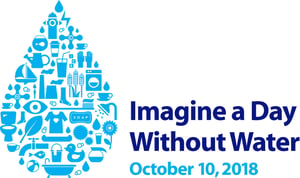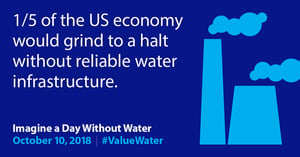 The desire for clean water cuts across political and geographic lines. We rely on a functional public water system for our daily tasks … and for survival.
The desire for clean water cuts across political and geographic lines. We rely on a functional public water system for our daily tasks … and for survival.
Unlike some Third World countries, we don’t have to walk miles to obtain potable water. Instead, we rely on safe and reliable water infrastructure.
Backflow preventers play a key role in protecting water quality. These valves keep contaminated water from flowing back into the public water supply. Problems may occur when owners don’t properly install or maintain backflow devices.
Citizens become alarmed when dirty water flows out of their tap, instead of pure, clean water. Business as usual comes to an abrupt halt as local governments work to identify the contamination sources and restore pure water.
Most citizens can’t imagine a day without water
We realize that it’s essential to our quality of life. In fact, the vast majority of Americans, across parties and regions, want the government to invest in our water infrastructure.
The data shows 88 percent of Americans support increasing federal investment to rebuild water infrastructure, and 75 percent of Americans want Congress to be proactive and invest in our nation’s water infrastructure before our systems fail.
Renewed investment in our water infrastructure isn't only about avoiding a day without water for personal use. A day without water would mean havoc for businesses and our economy too. Every business is a water reliant business in one way or another.
According to the Value of Water Campaign’s report on The Economic Benefits of Investing in Water Infrastructure, a one-day disruption in water services at a national level would result in a $43.5 billion daily sales loss to businesses.
Unfortunately, there’s a disconnect between what Americans value and the actions of the federal government. Investment in water infrastructure has not been a priority for decades.
The federal government’s investment has declined precipitously, leaving states, localities, water utilities and people who pay water bills to make up the difference. Meanwhile, our systems are crumbling. The U.S. government is currently funding $82 billion less than what is needed to maintain our water infrastructure, putting our health, safety, economy and environment at risk.
So, what can we do about it?
October 10th is Imagine a Day Without Water, a national day of action to raise awareness about the value of water. We can leverage our collective power, educate our decision makers and inspire our communities to put water infrastructure on the agenda.
Unfortunately, many communities throughout the country know what it’s like to endure days without clean water. They may have to boil water or only rely on bottled water to survive. Following are some examples of the varied causes and impacts of contaminated water.
Corpus Christi, Texas
Contaminated water disrupted the city in December 2016. Citizens registered complaints about dirty and smelly water starting in early December.
After investigating the problem, the city informed residents that they couldn’t use their drinking water for about four days, even if they boiled it. They also couldn’t take showers or wash their clothes.
The city, along with the help of the Texas Council of Environmental Quality and the Environmental Protection Agency, found the source, fixed the problem and flushed the system. On December 18, all three zones of the city could use their water again.
In response to the water ban, the city council began holding talks about how to improve their water system and keep this from happening again. The city has created a backflow prevention program and hired a new water director. Three new water towers are being built to help improve the city’s water pressure. These towers should lead to less backflow and better backflow prevention.
DeKalb County, Georgia
After a large diameter water main break in March 2018, DeKalb County Department of Watershed Management issued a Boil Water Advisory to protect the public from a potential health hazard. Because of the break, water pressure in parts of the water system dropped to dangerously low levels.
The county reported, “When this occurs, a potential health hazard may exist in these areas of zero pressure from backflow and/or back-siphonage of water of unknown quality into the water distribution system.” The city fixed the water main and then removed the Boil Water Advisory two days later.
Eagle, Idaho
Suez Water discovered one improperly installed backflow device caused contamination in several area homes in July. ABC 6 On Your Side reported that more than 20 residents became sick.
The problem resulted from Irrigation water from a nearby canal flowing into the potable water supply. Residents learned they had been drinking contaminated water because of the backflow issue. Properly installed backflow devices would have prevented irrigation water from mixing in with residential drinking water.

The utility reported that there have been three similar cases since 2012. All were a result of improperly installed devices by an unlicensed individual.
Residents needed to flush their plumbing system, boil water until the system was flushed and replace all water filters.
Kakaako Waterfront Park, Hawaii
The park and a nearby family assistance center that houses homeless people won’t have water until a backflow preventer is replaced, reported KHON2 in November 2016.
The facilities lost water pressure after a backflow preventer broke. At the time, 15 families lived at the center. Authorities made other arrangements until the part arrived.
Quality water requires an infrastructure investment
No matter what the cause, a day without water is a public health and environmental crisis. That’s why we are joining with hundreds of groups across the country for Imagine a Day Without Water to educate our communities on the value of water. No community can thrive without water, and every American deserves safe, reliable, accessible water services. Let's invest in our water systems now, so no American ever has to imagine a day – or live a day – without water again. #ValueWater




